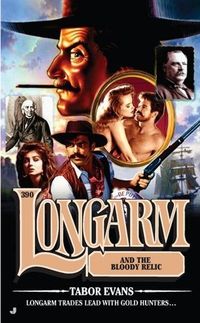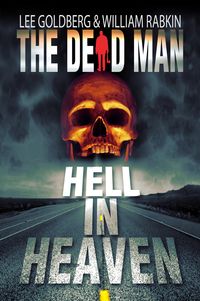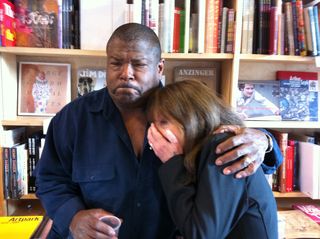Shoot for This
 My buddy Terrill Lee Lankford's terrific first novel SHOOTERS is now available as an ebook…with a great cover by JT Lindroos, an introduction by T. Jefferson Parker and an afterword by Lev Raphael.
My buddy Terrill Lee Lankford's terrific first novel SHOOTERS is now available as an ebook…with a great cover by JT Lindroos, an introduction by T. Jefferson Parker and an afterword by Lev Raphael.
You may recall that Lee was one of the first authors to reject a lucrative book deal in favor of self-publishing. This reprint is his first foray into self-publishing and I predict it's going to be blockbuster. Here are the details on SHOOTERS…
Nick Gardner is a fashion photographer of the highest caliber. His erotically-charged photos grace every major magazine in the world. He is a superstar shooter in a town filled with supermodels, desperate wannabes, and burned-out has-beens. His peers consider him cold and impenetrable. A loner who will let no one see beyond his carefully crafted facade. See, Nick has a secret. Another identity, buried for more than a decade. An entirely different career that has been hidden and denied.
And a murder.
From the sun-bleached shores of Malibu to the pages of Vogue and the porno empires headquartered in the San Fernando Valley, Shooters reveals the naked truth behind the twin worlds of high fashion and hardcore, where the difference between the two can be a well-chosen shadow or a brazen shaft of light.
"Lankford breathtakingly tosses the reader into a Hollywood snake pit that is at once compelling and repugnant." -Dallas Morning News
"Shooters cooks! This is a blood thriller that will vibrate your vindaloo! Terrill Lankford has crafted a truly bitchin' novel that will keep you up nights howling at the moon! Read it or be deprived!" -James Ellroy
"Shooters is excellent. It grabs you on page one and won't turn you loose." - Robert B. Parker
"'Shooters' is a dark, speeding ride on LA's fast lane. It's like you're watching a car accident. Once it starts to unfold you can't look away. You're hooked." -Michael Connelly
"Shooters marks a fine noir debut by Terrill lankford. Welcome to the land of twists and turns." - Gerald Petievich
The E-Book Gold Rush
The Washington Post reported today on how the rise of the ebook has been an overnight game-changer for authors…and has sparked a gold rush among them to get their back-list books and unpublished manuscripts on the Kindle as quickly as possible.
And for good reason.
The article leads off with the story of author Nyree Belleville, who was dropped by her publisher early last year. Demoralized and desperate, she put one of her old books on the Kindle just to see what would happen. She earned $281 her first month…and couldn't wait to share the news with her other author-friends.
“That moment is burned in everybody’s mind now,” she says. “It was not a tipping point. It was a turning point.”
She put her other old book online and figured out how to place both on other e-readers — the Nook, the Sony Reader, the iPad, Kobo. The next month, her royalties bumped to $474. Giddy, she self-published a new e-book in July. She made a jaw-dropping $3,539. It was like the best thingever!
“Every day, as the numbers ticked by, my husband and I were floored,” she says.
She got the rights to two more old novels. She feverishly wrote another e-novel, “Game for Love,” about a bad-boy pro football player and his unexpected marriage. She popped it online Dec. 15.
Earnings for that month? $19,315.
In January and February, she e-published a trilogy of young-adult novels she’d written years earlier. She called the first one “Seattle Girl” and chose a new author name, Lucy Kevin, to distinguish it from the sexually explicit Andre books.
Here’s what her first quarter looked like: 56,008 books sold; income, $116,264.
[…]There is no good comparison for what’s happening in the frontier world of self-published e-books, because there has never been anything like it in publishing history.
They're right…because her story is not unique. Just today I helped two friends of mine get their out-of-print backlists up on the Kindle. But the Post article also acknowledges not everyone is making a fortune self-publishing ebooks…in fact, most aren't making anything.
The overwhelming number of self-publishing e-authors are consigned to the same fate as their print counterparts: oblivion.
“We have less than 50 people who are making more than $50,000 per year. We have a lot who don’t sell a single book,” says Mark Coker, founder of Smashwords.com, a Web site that helped launch indie publishing.
“When I load all our numbers on a spreadsheet, it’s the typical power curve,” he says. “On the left, there’s a skinny area of the chart where people are knocking it out of the park. And then we have a very, very long tail off to the right, where some titles sell very few at all.”
I'm impressed that Mark Coker is telling it like it is. It's remarkable, and commendable, that he's not just making it easy for authors to get their books on Amazon, B&N, Kobo, etc, he's also being honest about their chances for success. He's not trying to trick them into thinking that publishing with Smashwords is all it takes to become a successful author.
Unfortunately, too many aspiring authors, giddy with greed and a desire to be the next Amanda Hocking, are more than willing to trick themselves. They delude themselves into believing that all they have to do is put the raw manuscripts on the Kindle and the cash will start pouring in, which is why there is tsunami of swill is sweeping over Smashwords and, by extension, Amazon.
But those of us who were previously-published have an edge. We have a platform and, more importantly, a backlist. You can't imagine how thrilling it is for mid-list authors to discover that our out-of-print books, something that we believe had no monetary value, are suddenly worth tens, if not hundreds, of thousands of dollars.
Any published author who isn't putting their out-of-print books on the Kindle, Nook, etc. is making a huge, and costly, mistake. But not just financially…they are missing an opportunity to establish a beachhead in the ebook world while having been previously published still means something and can give you a platform to rise above the tsunami.
The Laziest Writer on The Friggin’ Planet
 James Reasoner's latest LONGARM novel may be his last…he says he just doesn't have time to keep writing them, what with all the other books he's doing each year. So the lazy, whiny bastard is quitting, after only writing this measly handful of'em.
James Reasoner's latest LONGARM novel may be his last…he says he just doesn't have time to keep writing them, what with all the other books he's doing each year. So the lazy, whiny bastard is quitting, after only writing this measly handful of'em.
#178 LONGARM AND THE GOLDEN DEATH
#185 LONGARM AND THE DRIFTING BADGE
#192 LONGARM AND THE MAN-EATERS
#207 LONGARM AND THE BRAZOS DEVIL
#208 LONGARM AND THE ANGEL OF INFERNO
#214 LONGARM AND THE RACY LADIES
#222 LONGARM AND THE BACKWOODS BARONESS
#228 LONGARM AND THE VOODOO QUEEN
#229 LONGARM AND THE BORDER WILDCAT
#242 LONGARM AND THE RED-LIGHT LADIES
#245 LONGARM AND THE VANISHING VIRGIN
#250 LONGARM AND THE CHAIN-GANG WOMEN
#253 LONGARM IN THE VALLEY OF SIN
#256 LONGARM AND THE DYNAMITE DAMSEL
#258 LONGARM AND THE PISTOLERO PRINCESS
#261 LONGARM AND THE GOLDEN GODDESS
#266 LONGARM AND THE WAYWARD WIDOW
#272 LONGARM AND THE SIX-GUN SENORITA
#277 LONGARM AND THE YUKON QUEEN
#279 LONGARM ON A WITCH HUNT
#281 LONGARM AND THE LADY LAWYER
#283 LONGARM AND THE OZARK ANGEL
#287 LONGARM AND THE BLACKMAILERS
#290 LONGARM AND THE DESERT ROSE
#294 LONGARM AND THE ARIZONA FLAME
#301 LONGARM AND THE BANK ROBBER'S DAUGHTER
#302 LONGARM AND THE GOLDEN GHOST
#309 LONGARM IN THE TALL TIMBER
#311 LONGARM AND THE DEVIL’S BRIDE
#315 LONGARM AND THE LOST PATROL
#320 LONGARM AND THE TEXAS TREASURE HUNT
#323 LONGARM AND THE SCARLET RIDER
#329 LONGARM AND THE RESTLESS REDHEAD
#332 LONGARM AND THE OWLHOOT'S GRAVEYARD
#342 LONGARM AND THE BAYOU TREASURE
#345 LONGARM AND THE HELL RIDERS
#350 LONGARM AND THE HANGTREE VENGEANCE
#352 LONGARM AND THE PINE BOX PAYOFF
#374 LONGARM AND THE SAND PIRATES
#379 LONGARM AND THE DEADLY FLOOD
#387 LONGARM AND THE PANAMINT PANIC
#390 LONGARM AND THE BLOODY RELICLONGARM GIANT #24: LONGARM AND THE OUTLAW EMPRESS
LONGARM GIANT #25: LONGARM AND THE GOLDEN EAGLE SHOOT-OUT
LONGARM GIANT #26: LONGARM AND THE VALLEY OF SKULLS
LONGARM GIANT #27: LONGARM AND THE LONE STAR TRACKDOWN
LONGARM GIANT #28: LONGARM AND THE RAILROAD WAR
Man up, Jimmy. That's nothing. Bob Randisi has written 359 GUNSMITHS…you've still got a couple hundred to go.
“The Dead Man #3: Hell in Heaven” Is Out
 The third book in the DEAD MAN series, HELL IN HEAVEN, is now available on the Kindle, as a trade paperback, and on the Nook. Here's the story…
The third book in the DEAD MAN series, HELL IN HEAVEN, is now available on the Kindle, as a trade paperback, and on the Nook. Here's the story…
Matthew Cahill was an ordinary man leading a simple life until a shocking accident changed everything. Now he can see a nightmarish netherworld that nobody else does. Now each day is a journey into a dark world he knows nothing about, a quest for the answers to who he is and what he has become…and a fight to save us, and his soul, from the clutches of pure evil.
HELL IN HEAVEN
The sign on the exit reads "Heaven." What better place could there be for a dead man to visit? But when Matt takes the ramp, he finds a banner welcoming him by name to a tiny town seemingly left behind by the 21st century… and waiting for him to rescue it. But when he agrees to save Heaven's citizens from a coming terror, he discovers that evil has more faces than he could ever imagine – and good is far more complicated than he ever dreamed.
BONUS MATERIAL
* the first two chapters of THE DEAD MAN #4: THE DEAD WOMAN by David McAfee
* The first chapter of JUDGMENT, the first book in the JURY SERIES, by Lee Goldberg.
My Day at the LATFOB
 I had a great time at the Los Angeles Times Festival of Books today. It was held at USC for the first time, and that was a little disorienting…but in a good way. Most of the bookstores booths were in the same spot, year after year, at UCLA. But at USC, I didn't know where any of them were…so wandering the campus was more fun because I "found" the bookstores as I went along. I think I ended up visiting more booths and buying more books as a result. My haul included guidebooks for San Francisco (research for Monk) and signed copies of books by Steve Martin, Kelli Stanley, Tom Franklin, and Laura Lippman.
I had a great time at the Los Angeles Times Festival of Books today. It was held at USC for the first time, and that was a little disorienting…but in a good way. Most of the bookstores booths were in the same spot, year after year, at UCLA. But at USC, I didn't know where any of them were…so wandering the campus was more fun because I "found" the bookstores as I went along. I think I ended up visiting more booths and buying more books as a result. My haul included guidebooks for San Francisco (research for Monk) and signed copies of books by Steve Martin, Kelli Stanley, Tom Franklin, and Laura Lippman.
My general sense was that there were fewer people attending the fest at USC than there were past years at UCLA, but that might just be because the festival was more spread out and less crammed together.
There was one definite improvement over UCLA — the author "green room" was much swankier and more comfortable. Even the food was better.
I chatted with Gary Phillips, Kelli Stanley, Denise Hamilton, Mark Haskell Smith, Aimee Bender, agent Ken Sherman, LA Times Magazine editor Nancie Clare, and lots of other authors before I got together with my fellow panelists Don Winslow, John Vorhaus and Thomas Perry for lunch.
Tom and I had a long talk about JUSTIFIED, and what makes Elmore Leonard so special, and the appeal of amiable bad guys. We also talked about the fates of the TV pilot scripts for BUTCHER'S BOY (for Fox) and JANE WHITEFIELD (for CBS). We talked about some of the books Tom abandoned before finishing…and about the new stuff he has coming.
I went all fan-boy over Don Winslow when he joined us… I think his book SAVAGES is the best book I've read so far this year. I loved it and grilled him on some of his daring creative choices.
Then it was time to head off to our panel.
She actually didn't know how to get to our room, but luckily I did, so I ended up guiding our guide. The panel went great. Don, John, and Thomas were terrific and not only were they very funny, but they shared some very good insights into the writing process (I used some of what I learned from them at lunch during our personal conversations as the jumping off point for some of our panel discussions). Afterwards, we had good signing and headed back to the green room to eat more food. (That's John, Don, me and Tom in the picture)
After gorging ourselves, Don, Thomas and I went to Mystery Ink's booth for another signing and talk shop.
All-in-all, it was a fine day.
MWA Announces Edgar Winners
Mystery Writers of America is proud to announce the winners of the 2011 Edgar Allan Poe Awards, honoring the best in mystery fiction, non-fiction and television published or produced in 2010. The Edgar® Awards were presented to the winners at our 65th Gala Banquet, April 28, 2011 at the Grand Hyatt Hotel, New York City.
BEST NOVEL
The Lock Artist by Steve Hamilton (Minotaur Books)
BEST FIRST NOVEL BY AN AMERICAN AUTHOR
Rogue Island by Bruce DeSilva (Tom Doherty Associates – Forge Books)
BEST PAPERBACK ORIGINAL
Long Time Coming by Robert Goddard (Random House – Bantam)
BEST FACT CRIME
Scoreboard, Baby: A Story of College Football, Crime and Complicity
by Ken Armstrong and Nick Perry (University of Nebraska Press – Bison Original)
BEST CRITICAL/BIOGRAPHICAL
Charlie Chan: The Untold Story of the Honorable Detective and his
Rendezvouz with American History by Yunte Huang (W.W. Norton)
BEST SHORT STORY
"The Scent of Lilacs" – Ellery Queen Mystery Magazine by Doug Allyn (Dell Magazines)
BEST JUVENILE
The Buddy Files: The Case of the Lost Boy by Dori Hillestad Butler (Albert Whitman & Co.)
BEST YOUNG ADULT
Interrogation of Gabriel James by Charlie Price (Farrar, Straus, Giroux Books for Young Readers)
BEST PLAY
The Psychic by Sam Bobrick (Falcon Theatre – Burbank, CA)
BEST TELEVISION EPISODE TELEPLAY
“Episode 1” - Luther, Teleplay by Neil Cross (BBC America)
ROBERT L. FISH MEMORIAL AWARD
"Skyler Hobbs and the Rabbit Man" – Ellery Queen Mystery Magazine
by Evan Lewis (Dell Magazines)
GRAND MASTER
Sara Paretsky
RAVEN AWARDS
Centuries & Sleuths Bookstore, Forest Park, Illinois
Once Upon A Crime Bookstore, Minneapolis, Minnesota
THE SIMON & SCHUSTER – MARY HIGGINS CLARK AWARD
(Presented at MWA’s Agents & Editors Party on Wednesday, April 27, 2011)
The Crossing Places by Elly Griffiths (Houghton Mifflin Harcourt)






